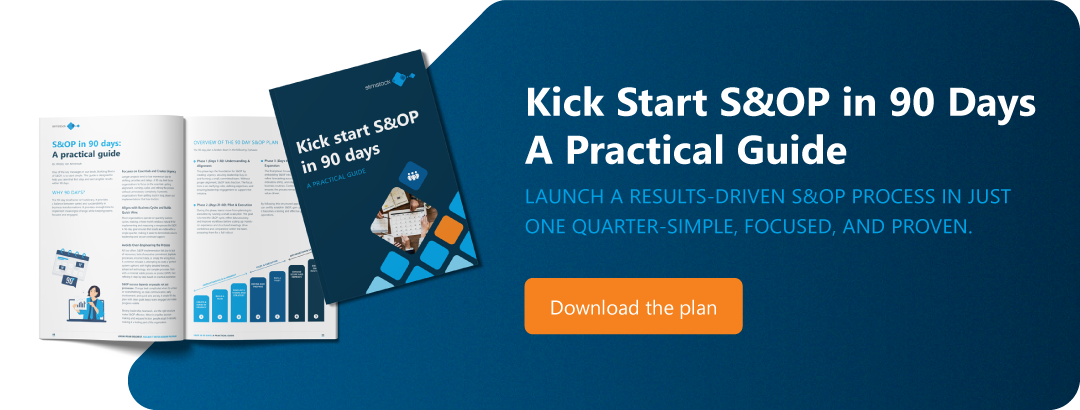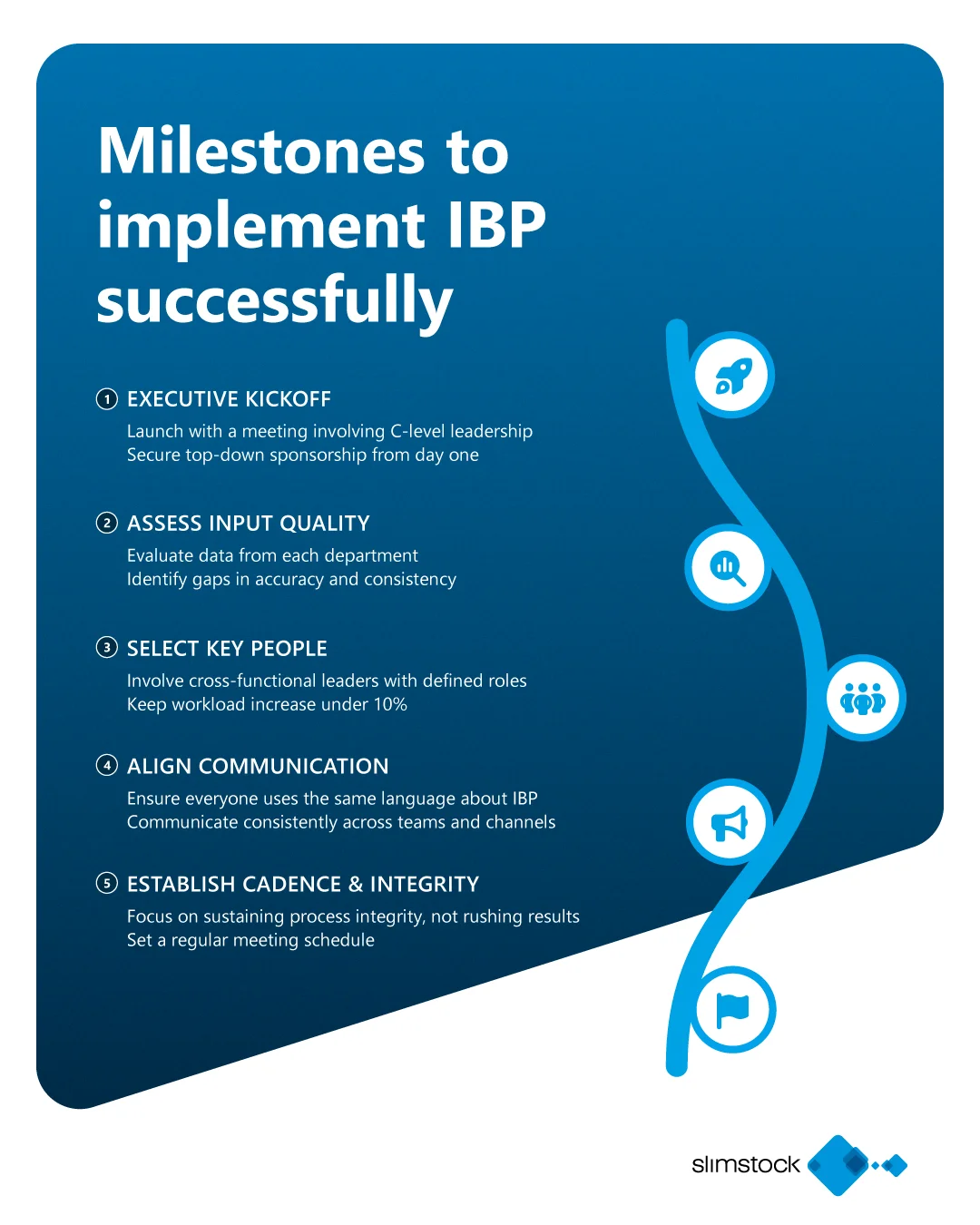Table of contents
Table of contents- From S&OP to IBP: steps to evolve planning and connect strategy to execution
- What is IBP and why does it matter to your business
- Granularity, alignment, and governance: the pillars of effective IBP
- Starting from scratch: how to implement IBP with consistency
- Fully integrated vs partially integrated: the impact on results
- IBP: more than a process, a way of thinking about the business
Planning is no longer a topic restricted to technical departments. That was one of the key messages from Laís Roupinha, Country Manager at Slimstock Brazil, during the S&OP Experience, an event that brought together supply chain, planning, and finance leaders on 18–19 March in São Paulo.
While addressing the topic of Integrated Business Planning (IBP), Laís pointed out that many companies still operate under a partially functional model, where planning is limited to sales, purchasing, and supply, and therefore fail to unlock the full potential of the process. According to her, a more holistic approach is needed, with C-level sponsorship, clear roles, solid governance, and communication across all areas of the business.
“IBP must stop being a technical process and become a strategic one, connected to the company’s ambition. If the CEO isn’t in the room, if the data lacks quality, if decisions are still made in isolation, we’re not really doing IBP,” she stated.
What is IBP and why does it matter to your business
In practice, Integrated Business Planning is an evolution of S&OP. While S&OP aims to balance supply and demand, IBP connects this tactical planning to the company’s strategic decisions.
And it all starts with a mindset shift: planning is not a monthly meeting, it’s a medium- and long-term decision-making process with a direct impact on the results promised to the market.
Key benefits of a structured IBP approach
Companies that implement structured IBP are able to:
- Reduce the gap between planned and executed outcomes.
- Make decisions based on scenarios and integrated data.
- Ensure all areas—sales, supply, marketing, finance, innovation—speak the same language.
But for this to happen, it’s essential to break down silos and ensure planning is led by someone directly accountable for the business. According to Laís, only one-third of companies have a C-level executive chairing planning meetings, and fewer than 20% use in-depth scenario analysis to guide decision-making.
Granularity, alignment, and governance: the pillars of effective IBP
One of the central points of the presentation was the need to adjust the level of granularity in the process.
Discussions about SKUs in executive meetings add little value. That’s why each level of planning—strategic, tactical, and operational—needs to work with the appropriate level of detail, using meaningful units of measurement for each area involved: volume, margin, revenue, tonnes/hour, and so on.
Laís also reinforced the importance of a process with:
- Clear governance: defined roles (RACI or RAPID), shared goals, and a structured cadence.
- End-to-end alignment: integration across departments, from portfolio planning to execution in supply.
- Data quality and proper systems: it’s not just about having robust systems, but ensuring data is reliable and that technology resources match the weight of the decisions.
Starting from scratch: how to implement IBP with consistency
For companies still in the early stages, Slimstock recommends drawing on change management principles. Rather than moving too fast, the focus should be on holding regular meetings, ensuring consistent communication, and maintaining process integrity.
Recommended milestones for successful implementation include:
- An executive meeting with C-level leaders as a starting point.
- Assessing input quality by department.
- Selecting key people for the project, while respecting their workload (no more than a 10% increase).
- Full alignment of communication: the entire team must speak the same language about what IBP is and what it will deliver.
Communication, in fact, deserves special attention: it must be clear, consistent, and multichannel—from leaders to team members, peer to peer, and even with external suppliers and customers when relevant.
Fully integrated vs partially integrated: the impact on results
A study cited by Laís during the presentation showed that companies with fully integrated processes (IBP model) had a gap of less than 0.5% between the problem identified and the solution implemented—a significant figure, considering the levels of complexity involved.
This happens not because decisions are necessarily “more correct”, but because they are more committed. When all departments take part in defining scenarios and goals, the chances of misalignment and rework are much lower.
IBP: more than a process, a way of thinking about the business
Ultimately, integrated planning must reflect the company’s strategic ambition. And this only happens when the process is led, sponsored, and embodied by the organisation’s top leaders. When sales, supply, marketing, finance, and innovation work in sync, the plan stops being just a document and becomes a real lever for value creation.
Learn more about our Integrated Business Planning software and how it can help you turn strategy into action.







